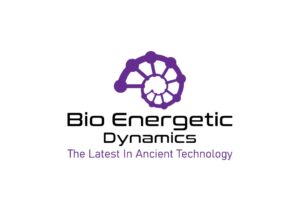
What Exactly Is The Cranial Respiration Mechanism? If you are in the Daytona Beach, Fl area and are experiencing headaches and have been searching for Cranial Sacral Therapy Daytona, we offer a very similar approach.
The Cranial Respiration Mechanism Is One Of The Best Kept Secrets of The Human Nervous System. Very few practitioners offer this approach when it comes to dealing with headaches in the Daytona Beach, Fl area.
At Bio Energetic Dynamics, the entire goal and focus of our Cranial Sacral Therapy work, which has it’s roots in Craniopathy and Cranial Reflexology (which to Cranial Sacral Therapy came from as well) is to restore the Cranial Respiration Mechanism by releasing chronically held Dural tissue on multiple levels, leading to a single release or multiple releases of compensation patterns, which were ultimately causing chronic pain and discomfort.
Now what is ‘dural tissue’? Dural tissue is a special kind of connective tissue (part of the Meningies), somewhat similar to fascia, that is only found in certain areas of the body, primarily the head (Cranium), beginning at the Crista Galli on the Ethmoid bone, weaving it’s way through the brain, with the heaviest concentration being near the Foramen Magnum, then continuing down upper cervical vertebrae (except C1 ). It emerges again briefly in the Sacral and Coccyx areas. The Dural tissue is part of the Meningeal tissues (which includes the Arachnoid, Dural, and Pia matter tissues). The one on the outside is is where the magic begins to happen. When doing Cranial Sacral Therapy here in Daytona, we focus primarily on the head unless I need to do bridges between the head and the Sacrum.
Exploring Further Into Detail
Basis of the Theory
It was first introduced by Bonesetters (before they became Osteopaths) Andrew Taylor Still and William Sutherland. In fact, Sutherland was the first to propose the ‘cranial respiration mechanism’.
The basic idea is that the cranial cavity is attempting to breath 6-12 times a minutes (slightly less than pulmonary respiration). There are approximately 22 bones in the skull (13 major ones), and they’re all trying to get a little ‘wiggle room’ when the Cranium attempts to breath and expand slightly. The AMA’s current position is that the cranial bones ossify early in life and that this in impossible. The results I’ve seen since experimenting with Cranial methods since 2009 beg to differ.
How Much Does The Cranium Expand?
Very subtly. Most of the early demonstrations I saw of Cranial work initially used a Hoberman Sphere to demonstrate the concept, but that (along with an Oobie – now called Panic Pete) is a gross over exaggeration.
Sutherland believed that the bones of the cranium ‘beveled like the gills of a fish’ indicating a respiratory motion for an articular mechanism…and absolutely no restrictions, adhesions, or miasms should inhibit it..
In fact, the client is doing half of the work during a Cranial session just by being alive and having a Cranial pulse. Imagine an uninflated balloon splashed with a very thin later of fragile glue. Once the glue dried, if you tried to inflate the balloon, the part not covered with glue would inflate easily, while the part that was impacted by the glue would have difficulty inflating. Any restrictions or adhesions on the balloon would create distortions during the act of inflating it.
Dural Unwinding
It happens rather slowly…at the speed of a snail crawling across glass than a roach running. If it were at the speed of a roach, I’m sure there would be far more people doing this. This is also why most of the times initial sessions take so long when people have chronic issues come in. TBI’s, MVA’s, whiplashes, traumas to the head, and headaches don’t have cranial collapse patterns that began the day before…they are typically decades in the making…and I feel it’s a true miracle when they unwind and release as much as they do in a matter of a couple of hours.
How Does My Work With The Cranium Generally Proceed?
When doing Cranial Sacral Therapy in Daytona, I actually draw from about 4 different schools or so. It is possible that as the Cranial Respiration Mechanism releases; at any time you will feel sensations ‘refer’ to the rest of the body because of the various layers of fascia and specialized tissues being nonlinearly connected. There is absolutely no wrong way for the cranium to release chronically held Dural tissue….and there is no limit to the sensations, memories, emotions, or thoughts which may arise. Some sessions get rather animated, other times people simply fall asleep. If you can come in with a headache, when it will start to vanish will be revealed as the session progresses. If you have many chronic issues, it may be wise to book for at least an hour and a half (although 2 and 3 hour sessions can be common for more complete releases of chronic patterns). I typically begin with a mix from elements from Cranial Reflexology and Cranial Unwinding (www.cranialunwinding.com), which may begin with a non contact application and then continues to a light touch pattern I call the ‘mohawk’ which seem to be a sort of entanglement pattern amongst the Occipital Bone (in back), the Vault (an amalgamation of the Parietal, Occipital, and Temporal bones), and the Frontal bone. I typically do a couple of passes from back to from, going slow as snails (this is reserved for longer sessions), as I wait for your Dural tissue to unwind and it’s own speed.
If I feel a plateau reaches sooner than it should…or it feels like there is residual adhesiveness requiring more persuasion than the piezoelectric fields generated through the cranial tissue with the gentle touch application, I may offer to use Dolphin Neurostim microcurrent devices (https://www.dolphinmps.com). These are similar in concept to T.E.N.S. Units, although the delivery system is more fine tuned. These output gentle microcurrent (less than 1 microamp) through a probe slightly smaller than a pen point. It is not a needle, nor does it penetrate the skin or the scalp. It can feel like the wrath of God, though. There were two primary modes I like to apply. A scar tissue release and an ATP stimulator release. These applications tend to release things that may have been a little too stubborn for the Unwinding process.
What Else Is Special About The Cranium And It's Specialized Tissues?
The Sphenoid bone is actually the only bone in the cranium to have all the elements of of the of the vertebral bodies in the spinal column, yet not be directly in contact with the spine at all. The Sphenoid bone connects to the Occipital bone via the Spenobasilarsynchondrosis.. When that gets locked up as the Cranium collapses and has adhesions build up, all types of distortions get passed on to the lower body. Not fun! A sphenobasilar release (I use one based upon the work of Dallas Hancock http://hancockclinic.com ) can potentially resolve all sorts of deeper issues. This is a much heaver touch than the Unwinding and is putting torsional force on the Cranium. It is applied bilaterally.
Does The Cranial Release Technique Feel Different Than Other Forms Of Massages?
If the Cranial Release Technique (cranialrelease.com) is performed, it typically feels like a reverse Cobra from a Thai Yoga session. The essential concept is that the Cranium is tractioned forward while aimed slightly towards the left or right by about 4 or more degrees (depending on which side is being released). It is essentially a release which focused on bringing all the Meningeal tissue to flexion tension, triggering a dural tension reflexive release.
What Are The Benefits Of A Craniopathy/ Cranial Reflexology Over Other Massage Types?
The hope and theory of Cranial work is that it will impact the lower body in some useful manner. The more the Cranium cannot breathe, the greater the chance distortions will be passed on to the rest of the body. That is literally where the reflexive element comes in to play. The head is being worked on, while somewhere else in the body is being impacted.
Cranium is tractioned forward while aimed slightly towards the left or right by about 4 or more degrees (depending on which side is being released). It is essentially a release which focused on bringing all the Meningeal tissue to flexion tension, triggering a Dural tension reflexive release.
How Can It Have Elements Of Swedish And Deep Tissue Massage?
Cranial Sacral Therapy feels radically different than Swedish Massage. Swedish massage is technically defined as any strokes or movement towards the heart…the most common methods being Efflourage and Pettrisage; although it can be simple subtle and light traction movements as well. It is also the deepest of deep tissue because the Dural tissue is about as deep in the Autonomic Nervous System as possible….far deeper than mere muscle bellies as are typically worked in spa sessions.
Cranium is tractioned forward while aimed slightly towards the left or right by about 4 or more degrees (depending on which side is being released). It is essentially a release which focused on bringing all the Meningeal tissue to flexion tension, triggering a dural tension reflexive release.

